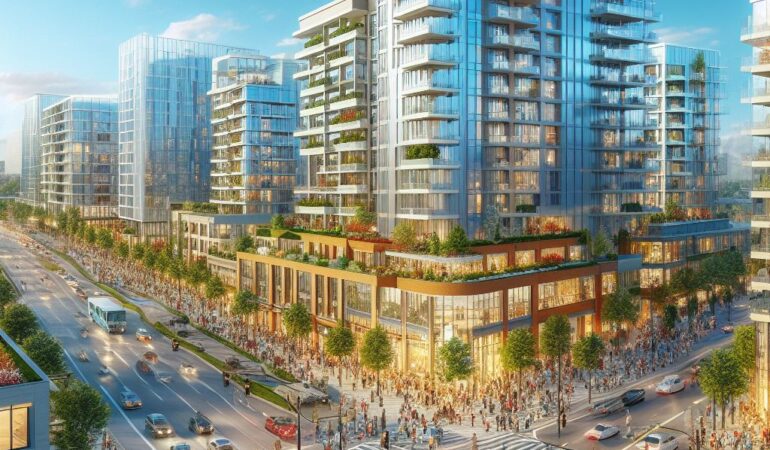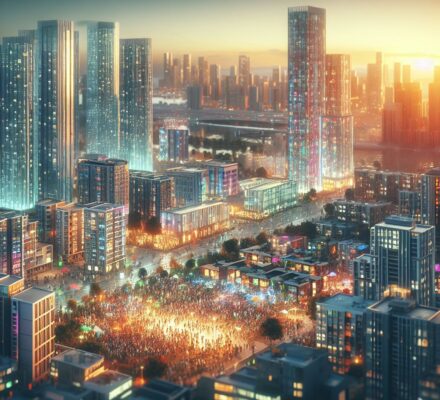Are you ready to dive into the world of multifamily apartment investment?
Well, buckle up because we’ve got the ultimate checklist for you.
In this article, we’ll guide you through the process of selecting prime investment locations.
From analyzing demographics and economic factors to assessing rental market demand and neighborhood amenities, we’ll leave no stone unturned.
So get ready to make data-driven, detail-oriented decisions that will set you up for success in the fast-paced world of multifamily investing.
Let’s get started!
Key Takeaways
- Population density and demographic analysis are important factors in selecting prime multifamily apartment investment locations.
- Economic factors such as job growth, income levels, and industry diversification are indicators of financial stability and growth potential.
- Rental market demand, including population growth, job market strength, and average rent increase, should be considered in selecting investment locations.
- Neighborhood amenities, such as proximity to public transportation, recreational facilities, and retail options, contribute to the overall attractiveness and marketability of the property.
Demographic Analysis
When conducting a demographic analysis for selecting prime multifamily apartment investment locations, consider the population density and age distribution of the area. These two factors can provide valuable insights into the demand for rental properties and the potential profitability of your investment.
Start by examining the population density of the area. A high population density indicates a large number of potential renters in the vicinity, increasing the likelihood of finding tenants quickly and reducing vacancy rates. Additionally, a densely populated area may suggest a higher demand for rental properties, which can lead to higher rental rates and increased cash flow.
Next, analyze the age distribution of the area. Understanding the age demographics can help you tailor your property to meet the needs of your target market. For example, if the area has a high concentration of young professionals, you may want to invest in apartments with modern amenities and close proximity to employment centers. On the other hand, if the area has a large number of retirees, you may want to consider properties with accessible amenities and features catering to their needs.
Economic Factors
Consider the economic factors to evaluate the financial stability and growth potential of potential multifamily apartment investment locations. When assessing the economic factors of a location, it’s crucial to analyze key indicators such as job growth, income levels, and industry diversification. A robust job market with sustainable growth is an important driver of demand for rental properties. Look for areas with a strong and diverse employment base, as this indicates stability and reduces the risk of relying on a single industry. Additionally, examine the income levels of the local population. Higher income levels suggest a greater ability to pay rent, reducing the likelihood of vacancy or delinquency.
Furthermore, it’s essential to evaluate the economic trend and growth potential of a location. Analyze historical data and projections to identify areas with consistent economic growth. Consider factors such as population growth, business development, and infrastructure investments. Areas experiencing population growth and attracting new businesses are likely to have a higher demand for rental properties.
In addition to these indicators, it’s important to assess the overall economic health of a location. Look at factors such as unemployment rates, inflation rates, and interest rates. A low unemployment rate indicates a stable economy, while low inflation and interest rates can positively impact the cost of financing and the overall profitability of the investment.
Rental Market Demand
To assess the rental market demand in potential multifamily apartment investment locations, start by evaluating the level of demand from prospective tenants. Look for areas with a high population growth rate and a strong job market. These factors indicate a healthy demand for rental properties. Additionally, consider the vacancy rates in the area. Low vacancy rates suggest a high demand for rental units, while high vacancy rates indicate a potential oversupply of apartments.
Another key indicator of rental market demand is the average rent in the area. Research the current rental rates for similar properties in the location you’re considering. If the average rent is increasing over time, it indicates a growing demand for rental units.
Furthermore, analyze the rental market demographics in the area. Look at factors such as the percentage of renters versus homeowners, the average household income, and the age distribution of the population. These statistics can provide insights into the target market and help determine the demand for rental properties.
Lastly, consider any local regulations or policies that may affect rental demand. For example, rent control laws can limit the potential for rent increases, while tenant-friendly laws may make it easier for tenants to find and keep rental units.
Neighborhood Amenities
Evaluate the availability of neighborhood amenities to enhance the appeal and desirability of potential multifamily apartment investment locations. When considering a multifamily apartment investment, it’s crucial to assess the amenities in the surrounding neighborhood. These amenities not only provide convenience and quality of life for residents but also contribute to the overall attractiveness and marketability of the property.
Here are three key factors to consider when evaluating neighborhood amenities:
- Proximity to Public Transportation: Access to reliable public transportation can greatly enhance the appeal of an apartment complex. Residents value the convenience of being able to commute easily to work or access popular destinations without the hassle of driving and parking.
- Recreational Facilities: The presence of parks, playgrounds, fitness centers, and other recreational facilities can significantly increase the desirability of a multifamily investment location. These amenities provide opportunities for residents to engage in physical activities and lead a healthy lifestyle.
- Retail and Entertainment Options: A variety of shops, restaurants, cafes, and entertainment venues nearby can greatly enhance the living experience of residents. The availability of these amenities adds convenience and entertainment value, making the neighborhood more attractive to potential tenants.
Future Growth Potential
Assessing the development potential of the area is crucial when determining the future growth prospects of a multifamily apartment investment location. This involves considering various factors that contribute to the area’s attractiveness for investment.
One important aspect to evaluate is the local economy. It is essential to look for areas with strong job growth, diverse industries, and a stable economy that can support sustained growth in the rental market. A stable economy will ensure a higher demand for rental properties.
Population growth rate and demographic trends are also important indicators to consider. It is beneficial to identify indications of an increasing population, especially in the target demographic for multifamily rentals. A growing population will drive demand for rental properties and provide a steady stream of potential tenants.
Infrastructure development is another factor that plays a significant role. It is essential to determine if there are plans for new transportation projects, schools, or commercial centers in the area. These developments can enhance the desirability of the location and attract more residents. Reputable educational institutions and healthcare facilities also contribute to the area’s future growth potential.
Analyzing real estate market trends in the area is crucial. Look for signs of increasing property values, rental rates, and low vacancy rates. These indicators suggest a healthy and growing market, providing favorable conditions for investment.
Additionally, consider any government incentives or tax breaks offered in the area. These can attract developers and investors, stimulating further growth and making the location more appealing for investment.
Frequently Asked Questions
What Is the Average Cost of Living in the Selected Prime Multifamily Apartment Investment Locations?
In the selected prime multifamily apartment investment locations, the average cost of living is an important factor to consider. It provides insights into the affordability and potential return on investment in these areas.
Are There Any Major Infrastructure Projects Planned for the Selected Prime Multifamily Apartment Investment Locations?
Are there any major infrastructure projects planned for your selected prime multifamily apartment investment locations? Research and analyze the potential impact of future infrastructure projects on property value and rental demand.
How Does the Crime Rate in the Selected Prime Multifamily Apartment Investment Locations Compare to Other Areas?
The crime rate in the selected prime multifamily apartment investment locations should be thoroughly researched and compared to other areas. Analyze data and consider factors such as crime trends, police presence, and community safety initiatives.
What Are the Transportation Options Available in the Selected Prime Multifamily Apartment Investment Locations?
In the selected prime multifamily apartment investment locations, you have a variety of transportation options available. From public transit to bike lanes and walkability, these areas offer convenience and accessibility for residents.
Are There Any Cultural or Recreational Attractions in the Selected Prime Multifamily Apartment Investment Locations?
Are there any cultural or recreational attractions in the selected prime multifamily apartment investment locations? Yes, there are numerous attractions to enjoy, such as museums, parks, theaters, and sports arenas, providing residents with a vibrant and diverse lifestyle.




